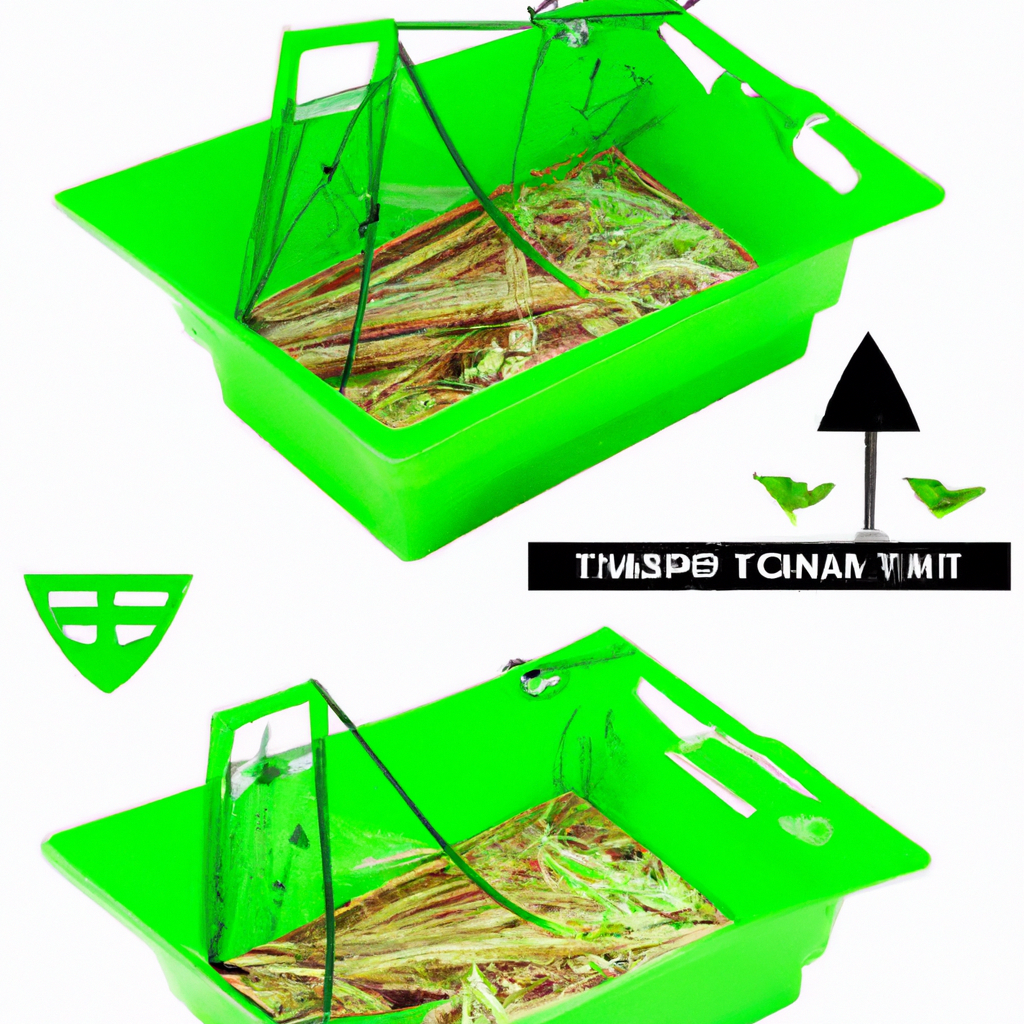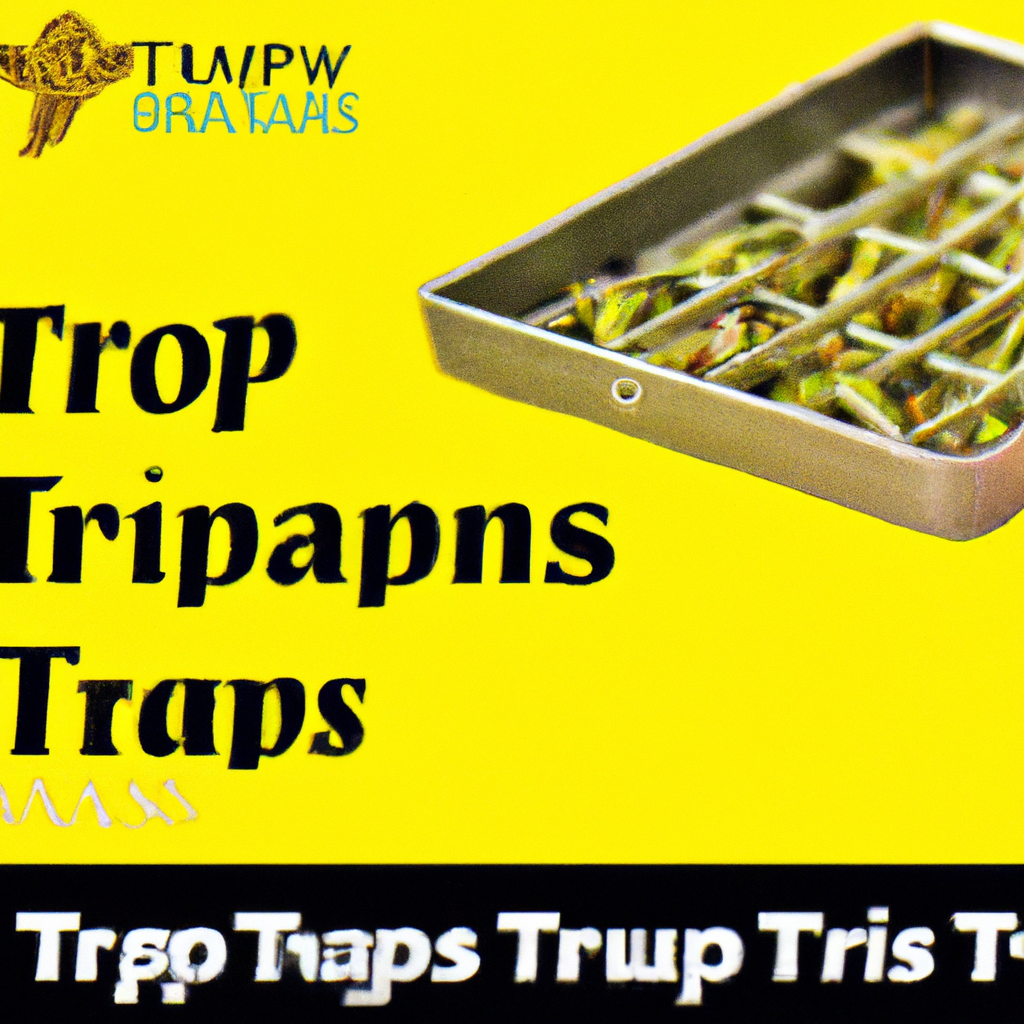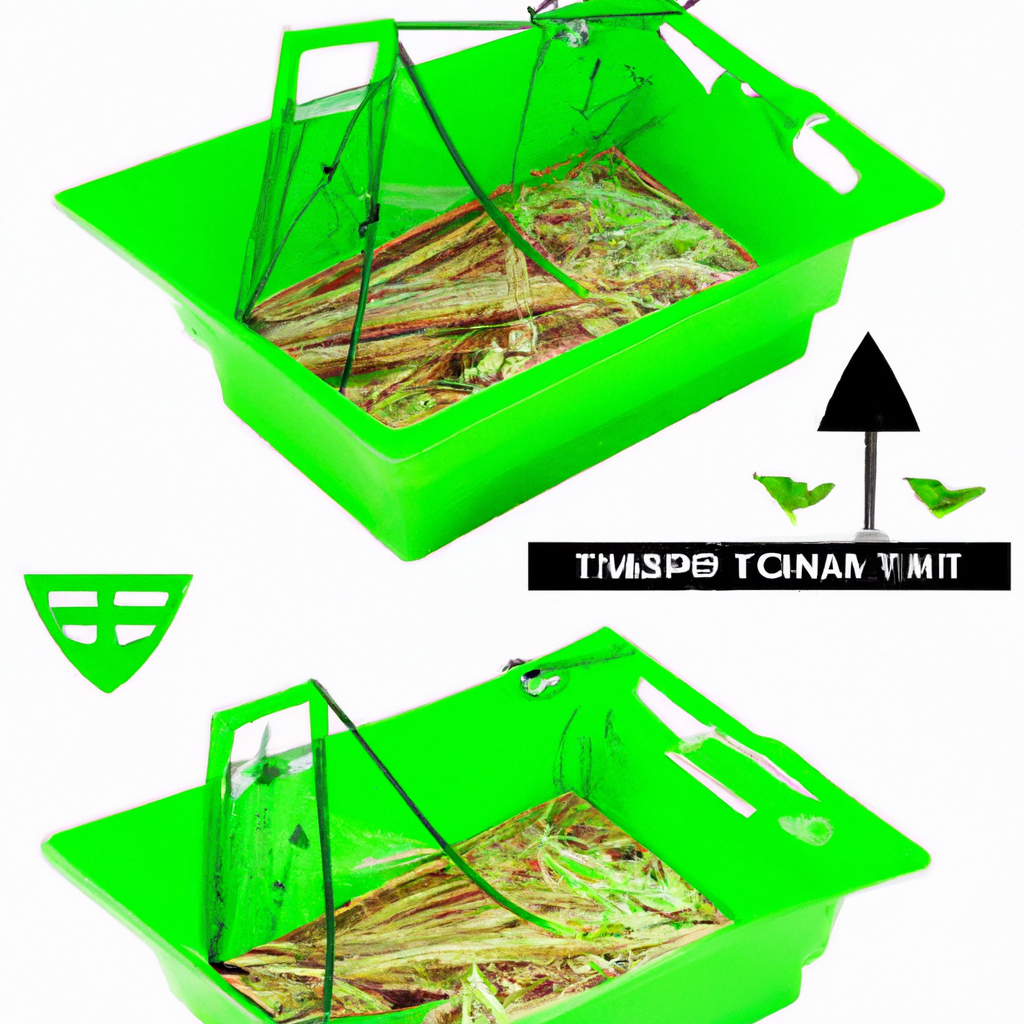Are you tired of flies invading your home or outdoor space? Look no further! In “The Ultimate Guide to Choosing the Best Fly Traps,” we’ve compiled the most comprehensive information to help you select the perfect fly trap. From fly tape to electric traps, we’ll explore the pros and cons of each option, ensuring you make an informed decision. Bid farewell to annoying flies and say hello to a fly-free environment with the best fly trap for your needs!
Different Types of Fly Traps
When it comes to dealing with flies, there are various types of fly traps available on the market. Each type has its own unique features and benefits. By understanding the different types, you can choose the one that best suits your needs and ensures effective fly control. Let’s take a closer look at some of the most common fly traps:
Sticky Trap
The sticky trap, also known as the adhesive trap, is one of the simplest and most widely used fly traps. It relies on a sticky surface to trap flies once they come into contact with it. The bright colors of the trap attract flies, and once they land on the sticky surface, they get stuck and cannot escape.
How It Works
Sticky traps work by using adhesive materials coated on papers or panels. These materials are usually scented to attract flies. When flies land on the trap, they become stuck to the adhesive, and their movement is restricted, ultimately leading to their demise.
Pros
- Simple and easy to use
- Non-toxic to humans and pets
- Can be used both indoors and outdoors
- Effective in trapping a wide variety of fly species
Cons
- Sticky traps may not be as effective in areas with high fly populations
- They need to be regularly replaced or cleaned when they become completely covered in flies
Best Uses
Sticky traps are particularly useful in areas where fly infestations are minimal or as a tool for monitoring fly activity. They can be placed in kitchens, restaurants, barns, or any area where flies tend to congregate.
Electric Trap
Electric fly traps use electricity to attract and kill flies. These traps are equipped with ultraviolet (UV) light bulbs that emit rays in the wavelength that flies find highly attractive. Once flies are drawn towards the light, they come into contact with an electrically charged grid or pad that electrocutes them.
How It Works
Electric fly traps work by utilizing attractive UV light to lure flies towards the trap. The electrically charged grid or pad that surrounds the light then instantly kills the flies upon contact.
Pros
- Highly effective in attracting and killing flies
- Ideal for use in areas with high fly populations
- Some models come with a catch tray for easy clean-up
Cons
- Electric fly traps can be more expensive than other types of traps
- They need to be plugged into an electrical outlet, limiting their placement options
- The buzzing sound emitted by some models may be bothersome
Best Uses
Electric traps are a suitable option for areas with significant fly infestations, such as barns, livestock facilities, or commercial food preparation areas. They can also be used in residential settings where flies are a persistent problem.
UV Light Trap
Similar to electric traps, UV light traps also utilize ultraviolet light to attract flies. However, instead of electrocuting the flies, UV light traps use a glue board or tray to capture and immobilize them. Once the flies land on the sticky surface, they are unable to escape.
How It Works
UV light traps attract flies by emitting UV rays, which are highly attractive to flies. The flies are then trapped on a sticky surface, usually in the form of a glue board or tray. Once captured, the flies are unable to fly away, ensuring effective control.
Pros
- Environmentally friendly and safe for humans and pets
- Low maintenance and easy to clean
- Suitable for use in both indoor and outdoor settings
Cons
- UV light traps may not be as effective in capturing all species of flies
- Flies caught on the glue boards may not die immediately, which can be off-putting for some users
Best Uses
UV light traps are commonly used in homes, kitchens, restaurants, and other indoor areas where flies are a constant annoyance. They are also effective for outdoor use, such as on patios or in backyard spaces.
Bait Trap
Bait traps rely on the use of attractants to lure flies into the trap. These traps typically contain a liquid or gel bait that is highly attractive to flies. Once flies are enticed by the bait, they enter the trap and become trapped or drowned.
How It Works
Bait traps work by using attractive substances, such as food-based or pheromone-based baits, to lure flies into the trap. Once inside, the flies are either trapped in a container with a narrow opening or drowned in a liquid bait.
Pros
- Highly effective in targeting specific fly species
- Can be used both indoors and outdoors
- Some bait traps have a catch container that is detachable for easy disposal
Cons
- Bait traps require periodic maintenance and bait replacement
- Certain baits may attract other insects, leading to unintended captures
Best Uses
Bait traps are particularly useful for targeting specific fly species that are attracted to certain types of baits. They are commonly used in agricultural settings, farms, stables, and other areas where specific fly species pose a problem.
Pheromone Trap
Pheromone traps are designed to mimic the scent of female flies to attract and trap male flies. Female flies emit pheromones to attract males for mating purposes, and these traps take advantage of that natural behavior.
How It Works
Pheromone traps use synthetic pheromones that mimic the scent of female flies. Male flies are attracted to the trap, thinking they have found a potential mate. Once inside, they become trapped and unable to escape.
Pros
- Highly effective in capturing male flies, reducing breeding and population growth
- Safe for humans and pets, as the pheromones used are not toxic
- Ideal for use in agricultural or outdoor areas with high fly populations
Cons
- Pheromone traps may not attract or capture all species of flies
- They require regular replacement of the pheromone attractants
Best Uses
Pheromone traps are commonly used in agricultural settings, such as orchards, vineyards, and crop fields, where specific fly species can cause damage to plants. They can also be used in outdoor residential areas where fly populations are high.
Factors to Consider Before Choosing a Fly Trap
Now that you’re familiar with the different types of fly traps available, it’s important to consider several factors before making a decision. Selecting the right fly trap involves analyzing your specific needs and the environment in which the trap will be used. Here are the key factors to consider:
Indoor or Outdoor
First, determine whether you need a fly trap for indoor or outdoor use. Certain traps are specifically designed for indoor use, while others are more suited for outdoor environments. Consider the location where the trap will be placed and choose a trap that is suitable for that environment.
Fly Species
Take into account the types of flies you are dealing with. Different fly species may be attracted to different types of traps or specific baits. Identify the specific fly species present in your area to select a trap that effectively targets those flies.
Area Coverage
Consider the size of the area that needs fly control. Some traps have a smaller coverage area and are more suitable for use in confined spaces, while others are designed to cover larger areas. Ensure that the trap you choose can effectively cover the desired area.
Ease of Use
Choose a fly trap that is easy to set up and maintain. Consider your level of expertise or familiarity with fly traps. Some traps may require more manual assembly or maintenance, while others are designed for simple and hassle-free operation.
Safety
Consider the safety aspect of the fly trap, especially if you have children or pets in the area. Look for traps that are non-toxic and safe for use around humans and animals. Additionally, ensure that the trap design minimizes the risk of accidental contact with the trapping mechanism.
Budget
Determine your budget for a fly trap. Prices can vary depending on the type of trap, features, and brand. Set a budget range and choose a trap that provides the best value for your money while meeting your specific needs.
With these factors in mind, you can now make an informed decision when choosing a fly trap that will effectively control the fly population in your surroundings.

Additional Features to Look For
When selecting a fly trap, it’s worth considering additional features that can enhance its functionality and overall effectiveness. Here are some features to look for:
Durability
Choose a fly trap made from high-quality materials that can withstand outdoor elements or frequent use. A durable fly trap ensures long-lasting performance and value for money.
Refillable
Some traps have refillable components such as bait containers or adhesive panels. This feature allows for easy maintenance and avoids the need to purchase entirely new traps when refills are needed.
Ease of Cleaning
Consider traps that are easy to clean, especially those with removable catch containers or easily replaceable glue boards. Regular cleaning is essential to maintain trap performance and hygiene.
Attractant Refills
If the trap uses attractants, check if the specific attractants are readily available for purchase. Ensure you can easily obtain refill attractants to keep your trap working effectively.
Coverage Area
Ensure the trap provides sufficient coverage for the area you wish to protect. Different traps have varying ranges, so select one that matches the size of the space you want to control flies in.
Indoor/Outdoor Use
Check whether the trap is suitable for both indoor and outdoor use, or if it is specifically designed for one environment. Some traps are versatile and can be used in both settings, offering flexibility.
Noise Level
If you are sensitive to noise, consider traps that operate quietly. Some electric traps can emit a buzzing sound, which may be bothersome to certain individuals.
Child and Pet Safety
If you have children or pets in the area, opt for traps that are designed with safety features, such as protective covers or cages, to prevent accidental contact with the trapping mechanism.
Power Source
Consider the power source required for the trap to function. Some traps are battery-operated, while others need to be connected to an electrical outlet. Choose a power source that suits your preferred location for the trap.
CE Certification
Look for traps that have CE certification, indicating compliance with European health, safety, and environmental protection standards. This certification ensures that the trap meets essential requirements for use and quality.
By considering these additional features, you can narrow down your choices and find a fly trap that not only meets your basic needs but also provides added convenience and functionality.
Understanding Fly Behavior
To effectively control flies, it’s helpful to understand their behavior and habits. By gaining insight into how flies behave, you can better implement fly traps and preventive measures. Here are some key aspects of fly behavior to consider:
Species Identification
Different fly species have varying preferences and behaviors. Identifying the specific fly species you are dealing with can help determine the most effective fly traps or preventive measures to employ.
Preferred Breeding Sites
Flies often prefer specific breeding sites, such as decaying organic matter, garbage, or animal waste. Understanding these preferred breeding sites can help you target areas for fly control and implement proper waste management practices.
Flight Patterns
Flies have distinct flight patterns, which can vary depending on the species. Observing the flight patterns of flies can help you strategically place fly traps in areas where flies are likely to pass or congregate.
Feeding Habits
Flies are attracted to various food sources, including fruits, sugary substances, or even decaying matter. By addressing these food sources, implementing proper sanitation practices, and using suitable baits in fly traps, you can effectively attract and control flies.
By familiarizing yourself with fly behavior, you can employ targeted strategies and select appropriate fly traps to significantly reduce fly populations in your surroundings.

Fly Trap Brands Worth Considering
When it comes to fly traps, numerous brands offer reliable and effective solutions. Here are some fly trap brands worth considering:
Brand 1
Brand 1 is known for its durable adhesive traps that effectively capture flies. With a wide range of products suitable for indoor and outdoor use, Brand 1 offers reliable solutions for common fly problems.
Brand 2
Brand 2 specializes in electric fly traps that are highly effective in attracting and killing flies. Their traps are equipped with advanced technology and are designed for long-lasting performance.
Brand 3
Brand 3 is renowned for its UV light traps, utilizing powerful UV bulbs to attract flies. Their traps have user-friendly features and are suitable for both residential and commercial use.
Brand 4
Brand 4 offers bait traps that are designed to target specific fly species. Their traps are equipped with innovative bait systems and are ideal for agricultural and outdoor settings.
Brand 5
Brand 5 is a reputable manufacturer of pheromone traps that capture male flies. Their effective pheromone formulations ensure reliable fly control and are widely used in farming and horticultural industries.
When considering different fly trap brands, read customer reviews, and conduct research to determine which brand aligns best with your specific requirements and preferences.
In conclusion, choosing the best fly trap requires careful consideration of the different types available, understanding fly behavior, and evaluating various factors such as the environment, fly species, ease of use, safety, and budget. By taking these elements into account and considering additional features, you can select a fly trap that effectively controls flies and ensures a fly-free environment. Remember to also explore reputable brands that offer quality and reliable solutions. With the right fly trap in place, you can enjoy a fly-free zone and a more comfortable living or working space.




